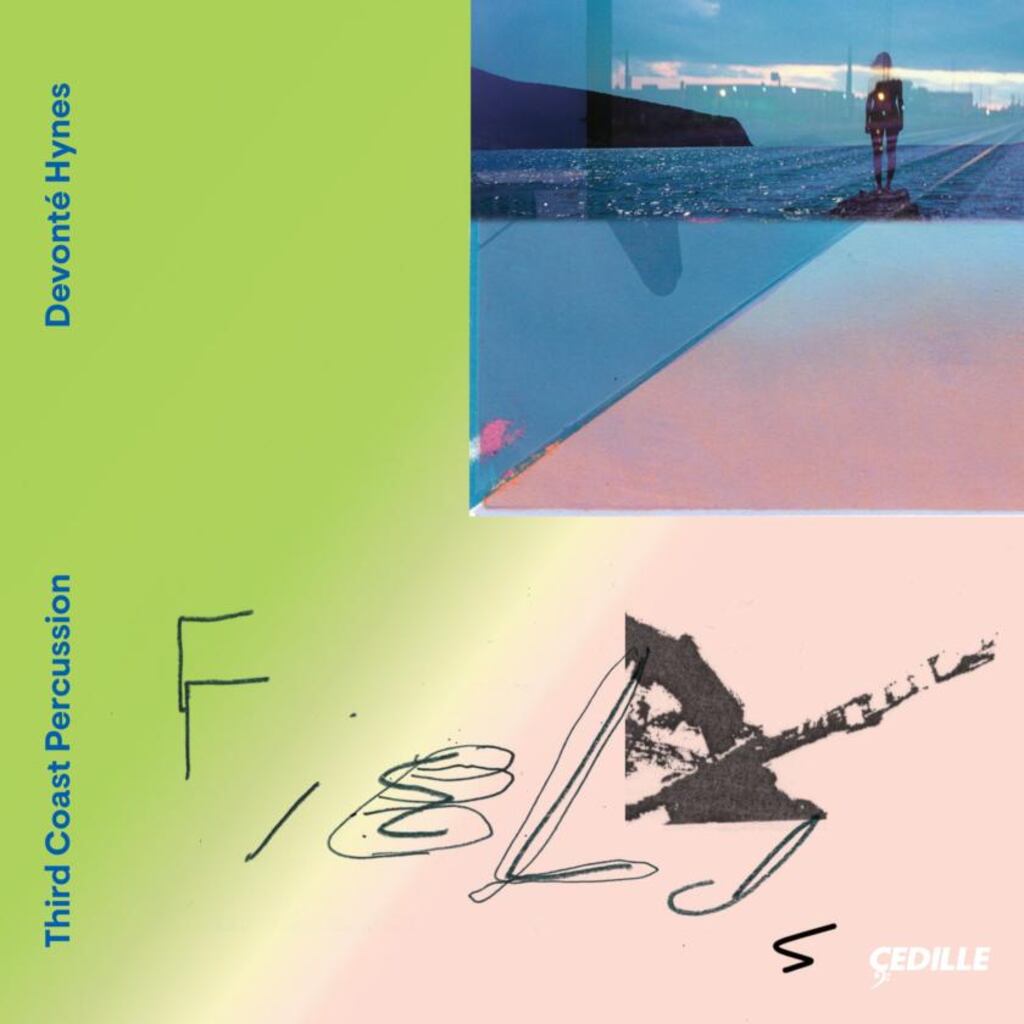Blood Orange is synonymous with a considered sensibility as an artist and producer, fluidly engaging disparate musical references, from his early years in punk bands, to his time as Test Icicles and Lightspeed Champion. Yet the music Devonté Hynes first knew was classical, learning on piano and cello, and he still considers this music as the foundation to his creativity, with Satie, Puccini, and Debussy in his melodies and timbres.
So a collaboration with Chicago’s Third Coast Percussion seems fitting – the quartet of David Skidmore, Robert Dillon, Peter Martin and Sean Connors are similarly synonymous with a progressive ethos, slipping the shackles of their form. Hynes and the quartet have another connection, in Philip Glass. Third Coast have commissioned and performed works by him, and Hynes has performed with him, and elements of Glass’s work – and, at times, his contemporary Steve Reich – weave around this record.
Fields is impressive. The first 11 tracks are a suite, For All Its Fury, followed by two longer pieces, Perfectly Voiceless and There Was Nothing. All were composed by Hynes; recordings and sheet music were sent to Third Coast, who arranged and orchestrated them for their instruments, and a dialogue between composer and performers emerged, with Hynes performing with the quartet at various points on the record, illustrating a true symbiosis.
There is a heady telepathy among the quartet, who approach the compositions with grace, clarity and dexterity, employing vibraphones, marimbas, crotales, glockenspiel, tuned bowls, tam tams, gongs, melodica, glass wind chimes, kalimba, tuned metal pipes, wood planks, desk bells and drums among other instruments.
Perfectly Voiceless references Steve Reich, with its core of arpeggios, deep-sea diving amid deft, nuanced percussion
For All Its Fury showcases the quartet’s dynamism. Opening track Reach unpacks percussion that suggests being trapped under glass, met with a vibrating synth. Dystopian, creeping elements emerge on Blur, complementing the doomy Wane, where disjointed beats fall like raindrops on corrugated roofs, dovetailing on to the discordant chaos of Curl.
Things warm up on Coil, filling a harp-shaped hole, where repetition gathers itself to become a sort of mesmerising mantra, an approach that bears fruit on other pieces, such as Gather with its rhythmic underpinning, allowing for a myriad of experiments to occur, experiments that convey a deep understanding of the electronic world – so alive and expansive, it almost becomes minimal techno.
Tremble and Cradle summon the atmosphere of Björk’s Pagan Poetry, delicate and raw, spiritual and profane, and Press engages in a lithe, floaty dialogue, driving polyrhythms through deep precision, with Fields as a perfect ending to the suite, with hazy vibraphone and epic cymbals.
Perfectly Voiceless references Steve Reich, with its core of arpeggios, deep-sea diving amid deft, nuanced percussion, resurrecting motifs, burying them, and later reanimating, folding in a Philip Glass minimalism that at times is disrupted by Hynes’s ability to conjure a satisfying pop melody.
There Was Nothing opens like a preface to a rave: glowing possibilities for a future not yet written. Synth sounds and bowed mallet percussion instruments force notes to linger, looping in Hynes’s appreciation for Debussy, with its harmony hiding out underneath the rhythm. It is elegant yet derelict in a way, moving smoothly only to fall away, returning towards that reflective impulse, with notes squirming under exquisite structures.
Dance drives part of this record, since choreographer Emma Portner, a long-time collaborator of Hynes, introduced Hynes and Third Coast, and Fields is pure movement. When composing, Hynes had an image of an open field, a place where music and dance could not only coexist, but coagulate. He has achieved that unison.















